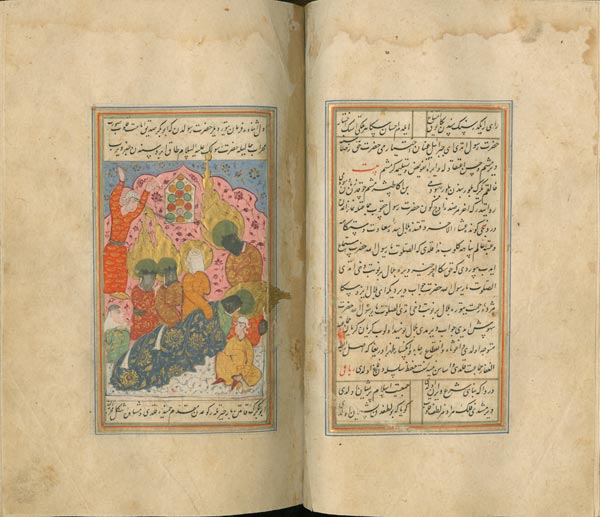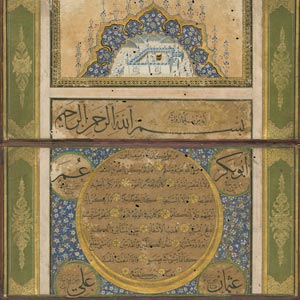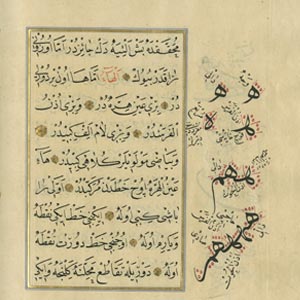The Prophet Muhammad's Death
The Show

The Prophet Muhammad's death Fuzuli (1495–1556), Hadiqat al-Su‘ada (Garden of the Blessed) Text dated AH 1006/1598 CE, possibly Ottoman Baghdad Ink, pigment, and gold on paper Special Collections, Hatcher Graduate Library, Isl. Ms. 386, page 137
This painting depicts the death of the Prophet Muhammad surrounded by members of his family. It is included in a late 16th-century illustrated copy of Fuzuli's Hadiqat al-Su‘ada (Garden of the Blessed), a martyrology that recounts the suffering and death of members of Muhammad's family. This particular manuscript includes thirteen paintings, which depict Muhammad and his household (the ahl al-bayt) with flaming halos—and thus as a holy family touched by divine light. Except for Fatima, the Prophet's daughter who bears a white facial veil, all other characters would have originally been shown without any facial veils. The rather sloppy swathes of black paint appear to have been added at a later date. They may have been inserted by a viewer who believed that figural representations are forbidden in Islam—itself one of the most widespread misconceptions about Islamic art.
Bibliography: Manuscript's online catalogue entry; and Milstein 1990, esp. 100–105, cat. nos. 14–31, figs. 12 and 21.
Return to the Show

